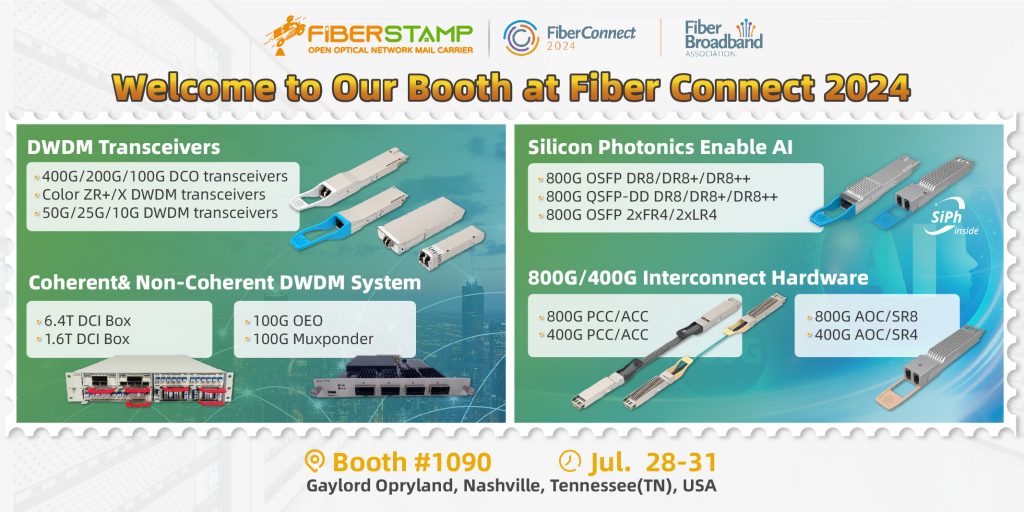In the current digital landscape, the imperative for high-speed data transmission has become paramount for both enterprises and technology suppliers. Meeting the escalating demands for accelerated data transfer, the 400G QSFP-DD DR4 silicon photonics module stands out as the cutting-edge solution for high-speed networks. This article will meticulously delve into the technical intricacies, advantages, and specific applications of the 400G QSFP-DD DR4 optical module within the dynamic realm of data center interconnects.

Unpacking the 400G QSFP-DD DR4 Silicon Photonics Module
The 400G QSFP-DD DR4 optical module is purposefully engineered to fulfill the rigorous 400G Ethernet prerequisites inherent in data center interconnections. Employing state-of-the-art PAM4 modulation, it adeptly supports 4×100G-DR optical signals and seamlessly integrates with the 100G QSFP28 DR optical module. At the transmission end, this module utilizes a sophisticated setup of four optical transmitters, effectively partitioning the input data signal into four parallel channels, each boasting an impressive transmission rate of up to 100 Gbps. These channels use a pair of optical transmitters with opposite wavelengths (e.g., 1310nm and 1550nm) to convert electrical signals into optical signals, which are then transmitted through MTP/MPO-12 single-mode optical fibers. At the receiving end, four optical receivers convert the optical signals back into electrical signals.
Overall, this optical module has become an essential tool for enterprises dealing with massive data processing.
Technical Specifications and Advantages of the 400G DR4 Optical Module
The 400G QSFP-DD DR4 optical module adheres to the IEEE 802.3bs standard, employing PAM4 signals to enhance spectral efficiency. It can achieve transmission distances of up to 500m over single-mode optical fibers (SMF) using MPO-12 connectors. In data center applications, one significant advantage of using the 400G QSFP-DD DR4 optical module over other 400G optical modules is its lower power consumption and superior thermal performance.

Distinguishing Features from Other 400G QSFP-DD Optical Modules
Compared to alternative 400G optical modules such as OSFP and QSFP-DD FR4, the 400G QSFP-DD DR4 optical module stands out with lower power consumption and enhanced device compatibility. Its compact form factor facilitates seamless integration into data center infrastructures. Additionally, the module adopts silicon photonics-based integrated technology, contributing to reduced power consumption and overall costs while enhancing integration density.
With these distinctive features, the 400G QSFP-DD optical module presents a reliable solution for data center applications. Its lower power consumption effectively mitigates energy costs within the data center, and its smaller footprint allows for higher-density deployments in equipment, thereby optimizing data center space utilization. Consequently, the 400G QSFP-DD DR4 optical module emerges as the premier choice for data center implementations.
Advantages of FIBERSTAMP’s 400G DR4 QSFP-DD Optical Module
- Low Power Consumption: Leveraging Broadcom’s 7nm DSP chip, the module boasts power consumption below 10W.
- Silicon Photonics Technology: Addressing massive data transfer by increasing signal density and transmission rates, thereby reducing equipment deployment and maintenance costs.
- 3D Packaging: A smaller form factor facilitates seamless integration into data center infrastructures.
Challenges Faced by the 400G DR4 Optical Module
Deploying the 400G QSFP-DD DR4 optical module involves considerations such as deployment density, power consumption, thermal management, and cable infrastructure. High power consumption can impact heat dissipation, reliability, and increase the overall thermal burden on equipment. As systems contend with massive data processing, higher-density data centers become imperative to meet these demands.
Compared to 400G OSFP optical modules, the 400G QSFP-DD optical module offers a smaller form factor, enabling high-density deployments on data center equipment, thereby enhancing transmission capacity. Advanced algorithms and circuit design optimizations provide the 400G DR4 optical module with low power consumption, reducing heat generation and minimizing cooling requirements. These technological breakthroughs ensure communication enterprises fully leverage the advantages of the 400G QSFP-DD DR4 optical module in their data center operations, promptly addressing challenges in specific application scenarios.
Conclusion
As the ideal solution for high-speed networks, the 400G QSFP-DD DR4 optical module has become an essential component for enterprises dealing with massive data processing. Leveraging its lower power consumption, superior thermal performance, and seamless upgradability, enterprises can elevate transmission rates while reducing operational costs effectively.





